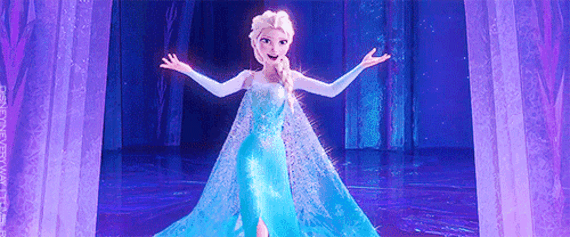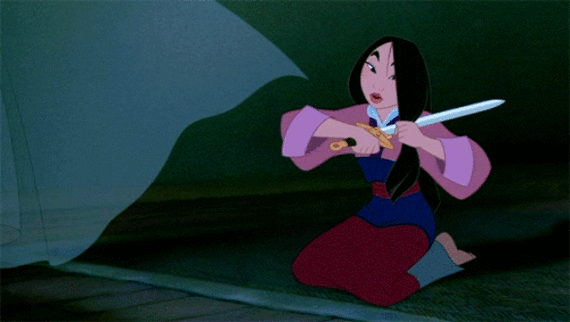Documentary filmmaker Albert Maysles, who died last night at 88, had long been on my bucket list of interviews, and it was with great anticipation that I sat down with him last year to reflect on his remarkable life and career. The man himself said it all, both on-screen and in our chat below. RIP to one of the greats, and thanks.
"I'm sick and tired of hearing things/From uptight, short-sighted, narrow-minded hypocritics/All I want is the truth/Just gimme some truth/I've had enough of reading things/By neurotic, psychotic, pig-headed politicians/All I want is the truth/Just gimme some truth." - John Lennon
Albert and David Maysles are generally regarded as the fathers of the modern American documentary film. Beginning in the early 1960s, their pioneering work with contemporaries such as Robert Drew, Richard Leacock and D.A. Pennebaker helped launch the "Direct Cinema" movement, devoted to capturing real life as closely as possible, in all its unscripted reality. Today, filmmakers like Michael Moore, reality TV and every news magazine on the air and on the web can trace their linage back to the Maysles brothers.
Their three defining features:
Salesman (1968), a sobering and often hilarious look at the lives of door-to-door Bible salesmen;
Gimme Shelter (1970), the shocking document of the Rolling Stones' 1969 tour, which climaxed with the stabbing death of a spectator by the Hells Angels at Altamont Speedway, outside San Francisco; and
Grey Gardens (1975), a look at "Big Edie" and "Little Edie" Beale, Jaqueline Kennedy Onassis' aunt and cousin, and their lives in their decaying Hamptons mansion, threatened with condemnation by the New York State Board of Health; all paint a vivid tableaux of the American landscape during those seminal years.
David Maysles died in 1987, but Albert, who will turn 88 later this year, is still going strong, visiting Los Angeles from his home on the East Coast for two retrospectives of his work: Friday April 11 at the TCM Classic Film Festival in Hollywood, with a screening of
Grey Gardens, and Saturday and Sunday, April 12 and 13 at the Cinefamily Theater on Fairfax Ave., showcasing a collection of their rare, early films, with discussions following.
Albert Maysles sat down with us to discuss his iconic career. Here's what followed:
One thing I found fascinating was your background: in addition to being a still photographer you have a Master's from Boston University in Psychology. Documentaries are certainly sociological in nature, but I imagine psychology also comes into play.
Albert Maysles: It's very, very important how you relate to people. That's where that comes in. You don't want to make a point-of-view film for or against a person. You just let it happen. Bob Drew, Leacock, Pennebaker and myself, when we made
Primary, that was the turning point.
All of the people you just named were the who's who of the American documentary film movement in the sixties, when it was practically invented.
It was an amazing group of people. It just happened.
You mentioned Primary, about the 1960 Democratic Presidential Primary election. What are your memories of the Kennedys from that time?
My favorite memory is of filming Jackie making a speech to a big crowd. She was so charming and graceful, then I saw her hands. She was wringing her hands, she was so nervous, and I got it on film. It was just a really lovely, human moment. That's certainly where some psychology came in. (laughs)
You also interviewed Fidel Castro around that time.
Yes, I shot a film that Bob Drew directed called
Yanki, No! It wasn't long after Cuba officially became Communist. I jumped into a cab at the Havana airport and said 'Where's Fidel?' He said, "He's addressing a group of women." So he took me there. There must've been two thousand women watching him speak. I got as close to him as I could, raised my camera with a telephoto lens, and suddenly, he turned in my direction. We met eyeball to eyeball and I knew it was okay. So I spent a couple days with him. The last time I saw him, we were standing together at a reception at an embassy. A messenger comes running in, hands him a telegram. Fidel tears it open, looks at me, and says "Shall I translate this for you?" I said "Please." He said "Your state department has just broken off relations with Cuba."
What were your impressions of Castro as a man?
I've heard all the stuff against him. I'm not sure what's correct and what's incorrect, but from what I've seen, he's brought a lot of goodness to Cuba. It's got one of the best educational and health care systems in the world, and puts ours to shame, on both fronts. I think it's also stupid to continue the embargo against Cuba. One should love thy neighbor. That's not an act of love. It's one of hostility.
In all of the work you and David did, from the early stuff with the Kennedys to Grey Gardens, you were both able to be almost invisible, giving the films a fly-on-the-wall intimacy. Given how cumbersome and loud the cameras were back then, this must have been quite challenging.
Somewhere along the line, I don't remember exactly when, I modified one of our cameras so I could mount it on my shoulder. It was a quiet camera to begin with, but to be able to have that kind of mobility made it much easier to be less obtrusive. You could carry it all day long and not get tired. I built a few different cameras over the years.
Albert (left) and David (right).
Tell me about your working relationship with David. It sounds like you had an incredible bond.
Yeah, we did. For one thing, we were brothers, in the best sense. Brothers don't always get along, but we did. We just had our hearts and souls in making good films. We were a natural combination. We didn't have competing roles. I did all the camerawork, he did all the sound.
How did you move from doing short documentaries into features?
My brother and I did a film on Truman Capote. David was talking with Truman's (book) editor, who asked if we had ever thought about doing a feature documentary. He suggested we do one on door-to-door salesmen. That's how that film happened.
Salesman is an amazing film. Paul Brennan, your protagonist, so to speak, is like a real-life incarnation of Willy Loman. Did Arthur Miller ever see the film?
Yes, he did. He thought very highly of it.
When you're watching your subjects live their lives are you able to maintain a feeling of detachment towards them, so you can have a sense of objectivity to your films or can you not help but become emotionally involved at a certain point?
The deeper we can delve into their emotions, the better. For the purpose of the film, I know that I can't do anything but get it straight. That said, I'm a human being, so I can't help but have certain feelings toward the people I'm filming, for better or for worse.
I always felt Gimme Shelter and Haskell Wexler's Medium Cool are good companion pieces. You both went into it intending to make one kind of film, but when real life happened around you, both films turned into something completely different.
Yes, I think that's fair. Haskell is a good friend.
Medium Cool is an amazing film and it was turned into something other than what Haskell probably thought it would be. People have said
Gimme Shelter recorded the end of the sixties, while our Beatles documentary in a way recorded the birth of the sixties.
Where were you filming during the concert at the end? Were you ever in danger yourself?
I was at the back of the stage. As things were warming up before the concert, I was in front of the stage, off to the side. One of the Hells Angels looked at me and said "If you don't get outta here, I'll kill you." So I moved to the back of the stage. That spot I was in was exactly where the killing took place. So I was very lucky. My brother fortunately had a cameraman with him. They were sitting in the bed of a truck off to the side and they were the ones who filmed the stabbing.
You made an interesting comment on the Criterion commentary track, of that sequence being like Michelangelo Antonioni's Blowup, in that if you watch the sequence in full speed, it all happens too quickly to see what happened clearly, but if you slow it down, you see the gun and the knife.
And if you're listening closely, you can hear the gunshot, as well. David showed it to the Angels later on and one of them assaulted him and threatened us that if we ever showed the film in public, we'd be killed. Thankfully, we managed to avoid that. (laughs)
You had some amazing people filming for you on Gimme Shelter, including George Lucas.
The shots of the people coming over the hills were done by Lucas. Joan Churchill also shot a lot of great footage, and Stephen Lighthill, also.
Grey Gardens was very controversial when it was initially released, with some circles feeling you and David were exploiting these two women who seemed to be mentally ill.
The critic from The New York Times said we should be ashamed of ourselves for making the film. As someone with a background in psychology, I knew better than to claim they were mentally ill. Their behavior was just their way of asserting themselves. And what could be a better way to assert themselves than a film about them asserting themselves? Nothing more, nothing less. It's just them. They were always in control. And look, before that, Pauline Kael claimed that we staged everything that happened in
Gimme Shelter. So this kind of thing was nothing new. (laughs)
How did you find out about the Beales initially?
I had been making a film about Jackie's sister, Lee Radziwill, and her childhood in the Hamptons. One day, she got a phone call from Little Edie, saying she was in trouble, that the Board of Health was after them, could she come over and help out. She invited us to come along and that's how we met. A few months later, we were filming, just the two of us, David and myself.
I always felt from their points of view, it was still 1938, they were both these great beauties and they were still living in luxury. I never felt they viewed themselves as tragic figures who pined for what was; therefore I never viewed them as tragic.
That's interesting. I never thought of it that way, but it makes sense. As far as fashion was concerned, Little Edie was beyond all of us. She was designing her own clothes and own look. But the fact that people felt we were exploiting the Beales or the idea that we'd staged Gimme Shelter, that rankled me for years.
That's understandable. Your films were always about capturing the truth.
The fact that we were committed to coming as close to the truth as possible guided every move my brother and I made. Anything short of that would be a great loss.
![2015-03-05-1425587425-5222355-bornagainamericans.png]()





































